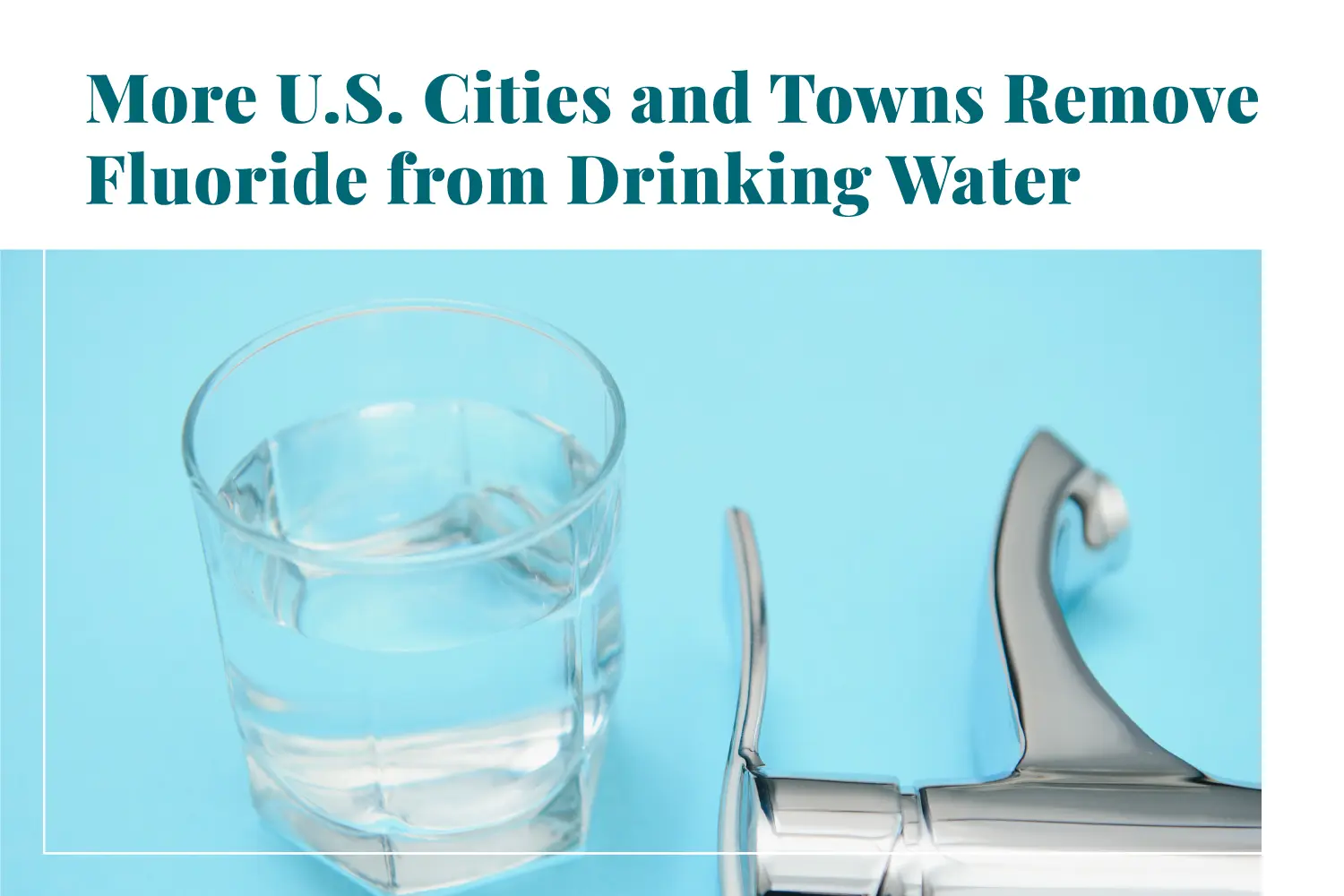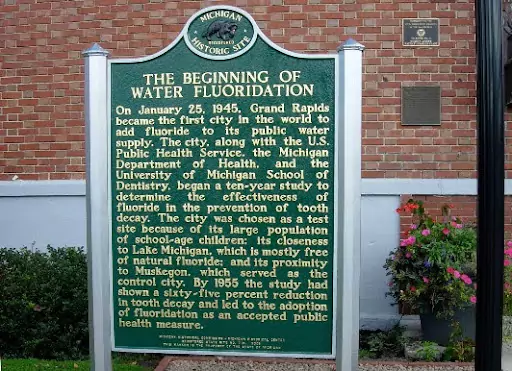More U.S. Cities and Towns Remove Fluoride from Drinking Water

Hey there, it’s Eric Thompson.
I recently had the pleasure of visiting some relatives in Michigan.
Let me tell you…
I had an incredible time exploring the beautiful scenery there.
I went to the serene Great Lakes, the lush forests, and all the charming small towns.
Michigan truly has so much to offer.
I loved every moment of my visit.
And while I was there…
I had an interesting conversation that took me by surprise.
A close relative mentioned that Michigan was the first place to fluoridate its community water.
Now, my family knows I’m passionate about the dangers of fluoride…
So this sparked my curiosity.
Michigan: The First City to Fluoridate Its Water
I did a bit of digging and discovered that Grand Rapids, Michigan…
Became the first city to fluoridate its water back in 1945.

They adjusted the fluoride levels to what was then considered a therapeutic 1.0 parts per million (ppm)…
To help prevent tooth decay. Since then…
Fluoride levels in drinking water have been adjusted to a maximum of 0.7 ppm…
Which is still in effect today.
The History of Fluoride
Fluoride has been a staple in our water supplies since the 1940s.
It’s naturally found in water, soil, plants, rocks, and even the air.
By the late 1930s…
Scientists recognized fluoride’s potential for preventing cavities and tooth decay.
This led to its widespread use in municipal water supplies across the country.
According to the CDC…
72.7% of the U.S. population on a community water source received fluoridated water as of 2020.
This percentage has stayed relatively stable since 2008…
Fluctuating slightly between 72.4% and 74.6%.
More U.S. Cities and Towns are Removing Fluoride
But here’s where it gets interesting.
Last week, KFF Health reported on a growing trend:
More and more U.S. cities and towns are choosing to remove fluoride from their drinking water.

This issue has sparked intense debates within communities.
While the CDC insists that fluoridated water is safe and cost-effective…
Concerns about potential hazards have persisted for as long as the practice has been around.
For instance, the Cleveland Clinic notes that while fluoride toxicity is technically possible…
It would require consuming a massive amount of water…
Which would be lethal due to water intoxication long before the fluoride levels became harmful.
Other concerns include possible links between fluoridated water and increased cancer risks.
The National Cancer Institute’s recent studies found no evidence of an association between fluoride in drinking water and bone cancer…
Though past results have been mixed.
Do We Still Need Fluoridated Water?
The scientific community continues to explore other potential impacts of fluoride consumption…
Such as its effects on pregnancy, arthritis, IQ, and kidney disease.
The results have been varied…
And more research is needed to draw definitive conclusions.
Despite these ongoing debates…
Many people are beginning to question whether we still need fluoridated water…
In an age where dental hygiene products are widely available.
Detractors argue that adding fluoride to drinking water is an imprecise and uncontrolled method of dosing residents…
And with many dental products containing fluoride…

It might be unnecessary.
The CDC, however…
Maintains that the greatest protection against tooth decay comes from using these products in combination with fluoridated water.
Nevertheless…
Groups across the U.S. have rallied to remove fluoride from community water supplies…
Advocating for individual choice regarding fluoride consumption.
How Many Communities Have Rejected Fluoridated Water?
Currently, a federal case in California could force the Environmental Protection Agency (EPA)…
To regulate or even ban fluoride in drinking water nationwide.
The Fluoride Action Network, an anti-fluoride organization…
Has been tracking this movement.
As of 2023, more than 240 communities worldwide have rejected fluoridated water since 2010…
With over 170 of those in the U.S.
Some of these communities are small…
Like Weston, Georgia, with just 80 residents affected.
Others are much larger…
Like Portland, Oregon, with about 900,000 residents.
According to the Fluoride Action Network…
The number of U.S. residents not receiving fluoridated water has steadily increased since 2010.
Dental Fluorosis in Children
In January 2011…
The U.S. Department of Health and Human Services (HHS) announced plans…
To reduce the recommended fluoride level in drinking water…
Due to increased incidences of dental fluorosis in children.
This condition occurs when children are exposed to too much fluoride…

Causing some detractors to double down on their anti-fluoride stance.
Several official agencies acknowledged that fluoride consumption through means other than water had increased…
Citing this as another reason to reduce levels of drinking water.
In 2015, federal recommendations were simplified to make 0.7 ppm the standard level for fluoride in community water.
More than 4.2 million Americans lived in communities without fluoridated water in 2023…
Up from just 219,900 in 2010.
Not all states agree on the issue…
And some are more aggressive than others in the decision to remove fluoride from their water supplies.
The Fluoride Action Network reported 16 states without any bans or removals of fluoridated water.
Others, like Pennsylvania, California, Florida, Tennessee, Missouri, and Wisconsin…
Have seen significant numbers of counties removing fluoride.
Pennsylvania leads with 17 counties and 647,232 residents affected.
Wrapping Up
So, what does this mean for us?
It shows that awareness is growing…
And more people are questioning the necessity and safety of fluoridated water.
Communities across the nation are already making these changes…
So, it’s important to stay informed and engaged.
I want to leave you with this thought:
We have the power to make informed decisions about our health.
We just need to stay vigilant and question all practices that may not serve our best interests.
In doing so, we can protect ourselves and our loved ones.
If you’re as passionate about this issue as I am…
I encourage you to get involved in your community.
Learn about your local water supply, attend town meetings…
And advocate for safer alternatives if necessary.
Let’s work together to ensure that our health and well-being are prioritized.
Warm regards,
Eric Thompson

